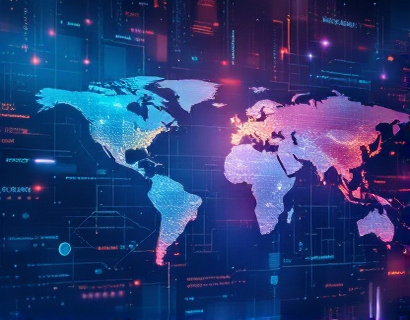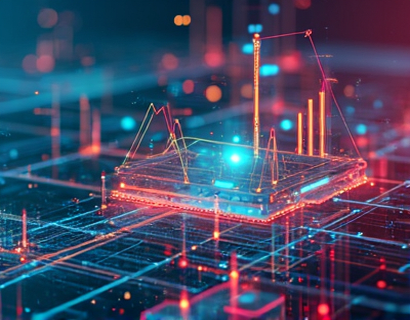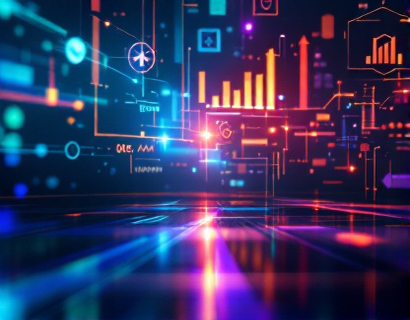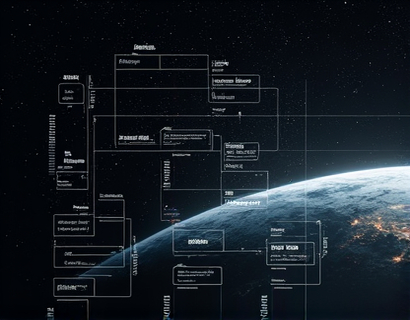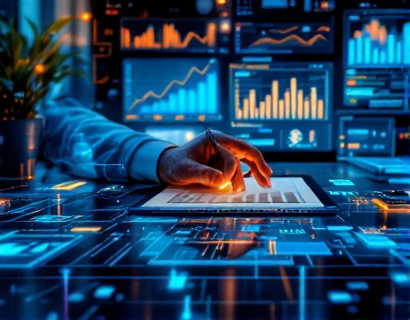Crypto and AI: Pioneering Digital Transformation for Enhanced User Experiences in the Ucosystem
The intersection of cryptocurrency and artificial intelligence (AI) is revolutionizing the digital landscape, driving unprecedented growth and innovation in the tech sector. This synergy is not just about combining two powerful technologies but about creating a new paradigm where user experiences are significantly enhanced. The integration of blockchain's decentralized and secure nature with AI's advanced computational capabilities is paving the way for more secure, efficient, and personalized digital interactions. This article explores the transformative impact of merging crypto and AI, delving into how these advanced technologies are redefining user interactions and driving growth in the tech sector. For tech enthusiasts and professionals, this exploration offers valuable insights into the future of digital innovation.
Understanding the Basics: Cryptocurrency and AI
To fully appreciate the impact of merging crypto and AI, it's essential to understand the fundamentals of both technologies. Cryptocurrency, often referred to as digital or virtual currency, operates on a decentralized network known as a blockchain. This technology ensures transparency, security, and immutability of transactions without the need for intermediaries like banks. The most well-known cryptocurrency, Bitcoin, was the first to demonstrate the potential of blockchain, but thousands of other cryptocurrencies have since emerged, each with unique features and use cases.
Artificial intelligence, on the other hand, encompasses a range of technologies designed to simulate human intelligence in machines. These include machine learning, natural language processing, and computer vision. AI systems can analyze vast amounts of data, identify patterns, and make decisions with minimal human intervention. The combination of AI's analytical prowess and cryptocurrency's secure and decentralized infrastructure creates a powerful toolset for enhancing digital experiences.
The Synergy of Crypto and AI
The convergence of crypto and AI is particularly potent in several key areas. One of the most significant is in the realm of security. Blockchain's inherent security features, such as cryptographic hashing and consensus mechanisms, provide a robust framework for protecting data. When AI is integrated, it can enhance security protocols by detecting and mitigating threats in real-time. For instance, AI algorithms can analyze transaction patterns to identify fraudulent activities, ensuring that the cryptocurrency ecosystem remains safe and trustworthy.
Another area where crypto and AI intersect is in the optimization of network operations. Blockchain networks, especially those that are decentralized, can benefit from AI's ability to manage and optimize resource allocation. AI can predict network congestion, balance load distribution, and improve transaction processing speeds. This not only enhances the efficiency of the network but also provides a smoother and more reliable user experience.
Enhanced User Interactions Through Personalization
One of the most exciting applications of crypto and AI is in personalization. AI algorithms can analyze user behavior and preferences to deliver tailored experiences. In the context of cryptocurrency, this means creating more user-friendly and intuitive interfaces for wallets, exchanges, and other financial services. For example, AI-driven recommendation systems can suggest the best times to buy or sell cryptocurrencies based on market trends and user profiles, making the investment process more accessible and less intimidating.
Personalization extends beyond financial services. In the broader digital ecosystem, AI can curate content, recommend products, and even assist in language translation, all while leveraging the secure and decentralized aspects of blockchain. This creates a seamless and highly personalized user experience, fostering greater engagement and loyalty.
Decentralized Applications and AI
Decentralized applications (dApps) are a prime example of how crypto and AI can work together to transform digital interactions. dApps operate on blockchain networks and offer decentralized alternatives to traditional applications. AI can enhance dApps by providing intelligent functionalities such as automated decision-making, predictive analytics, and enhanced user interfaces. For instance, a decentralized social media platform can use AI to moderate content, detect spam, and personalize user feeds, all while maintaining the decentralized and privacy-focused nature of the platform.
The integration of AI in dApps also opens up new possibilities for smart contracts. Smart contracts are self-executing contracts with the terms directly written into code. AI can optimize smart contracts by analyzing data to predict outcomes, automate complex logic, and ensure that contracts are executed efficiently and securely. This not only reduces the risk of errors but also increases the trust and reliability of decentralized transactions.
Data Privacy and AI-Driven Cryptocurrencies
Data privacy is a critical concern in the digital age, and the combination of crypto and AI offers promising solutions. Traditional cryptocurrencies like Bitcoin and Ethereum provide a level of anonymity, but they are not entirely private. AI-driven privacy coins, such as Zcash and Monero, take this a step further by using advanced cryptographic techniques to ensure transaction anonymity. AI can enhance these privacy features by analyzing and securing data in ways that prevent unauthorized access while maintaining the integrity of the blockchain.
Moreover, AI can help in compliance and regulatory adherence. As the crypto space evolves, regulatory frameworks are becoming more stringent. AI can assist in monitoring transactions and ensuring compliance with KYC (Know Your Customer) and AML (Anti-Money Laundering) regulations. This not only protects users but also helps crypto projects avoid legal pitfalls, fostering a more sustainable and trustworthy ecosystem.
Innovative Use Cases: Beyond Finance
While the financial sector is a significant beneficiary of the crypto and AI synergy, the impact extends far beyond. In the healthcare industry, AI can analyze medical data stored on blockchain to improve diagnostics and treatment plans. AI-driven predictive models can identify high-risk patients, optimize resource allocation, and ensure data privacy. Similarly, in the supply chain, AI can enhance transparency and traceability using blockchain, while optimizing logistics and reducing costs.
The entertainment industry is another area where crypto and AI can drive innovation. Blockchain can ensure fair compensation for content creators, while AI can personalize content recommendations and manage digital rights management. This creates a more equitable and efficient ecosystem for both creators and consumers.
Challenges and Considerations
Despite the numerous benefits, the integration of crypto and AI is not without challenges. One of the primary concerns is the technical complexity involved in developing and maintaining these systems. Both crypto and AI require specialized knowledge, and the convergence of these technologies demands a high level of expertise. Additionally, the regulatory landscape is still evolving, and navigating the legal requirements can be daunting for developers and businesses.
Another challenge is the scalability of blockchain networks. While blockchain offers many advantages, its current limitations in transaction speed and scalability can hinder widespread adoption. AI can help mitigate some of these issues by optimizing network operations, but significant advancements are still needed. Furthermore, the energy consumption associated with blockchain, particularly proof-of-work systems, raises environmental concerns that must be addressed.
Future Prospects: The Road Ahead
The future of crypto and AI is bright, with numerous opportunities for growth and innovation. As technology advances, we can expect more seamless integration and new applications across various industries. The development of more efficient consensus mechanisms, such as proof-of-stake, will enhance the scalability and sustainability of blockchain networks. AI advancements, particularly in areas like quantum computing and edge AI, will further augment the capabilities of these technologies.
For the digital ecosystem, the combination of crypto and AI promises a more secure, efficient, and personalized user experience. As more businesses and developers embrace this synergy, we can anticipate a new era of digital transformation. For tech enthusiasts and professionals, staying informed and engaged with these developments is crucial for staying ahead in the rapidly evolving tech landscape.
In conclusion, the merging of cryptocurrency and AI is not just a technological trend but a fundamental shift in how we interact with digital systems. By leveraging the strengths of both technologies, we can create a more secure, efficient, and user-centric digital world. Whether you are a developer, an investor, or a curious observer, the intersection of crypto and AI offers endless possibilities for innovation and growth.








